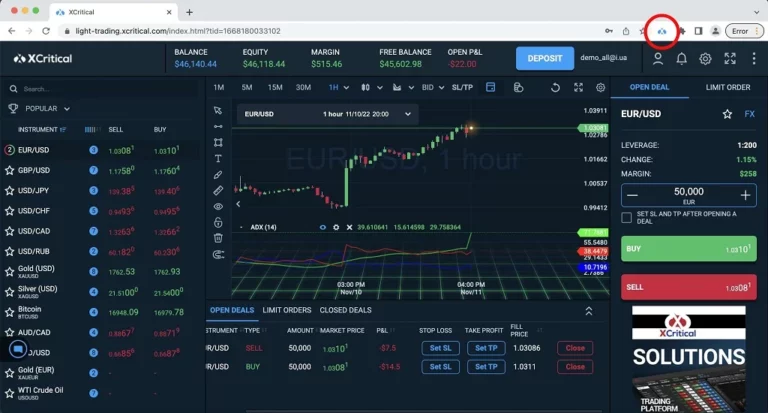What are cryptocurrency network fees? Learn about crypto and DeFi Get Started with Bitcoin com
Content
Binance’s Maker fees fade out to crypto exchange fees zero after a $10 million monthly trade volume, and Coinbase’s fee-free tier starts at $300 million. We have no other hidden charges, nor we charge for the deposite fee, except for the transaction and processing fees which are down below. Hence, several cryptocurrency users may wish to increase fees if they deem their transaction to be timely or urgent.
Why is there an exchange rate for cryptocurrency?
The exchange rate tells you how much crypto or other currency you’ll get in the swap. Please keep in mind that exchange rates refresh often as the value of crypto is constantly changing. By opting for cryptocurrencies with lower fees, individuals can save significantly over time. When translated into USD, these fees only represent several USD cents per transaction. This means that, for the average trader, transacting in BTC is not as expensive as one might think (high-frequency trading is another matter). For https://www.xcritical.com/ certain transactors, knowing that their transaction will be processed at a certain point in the future is not enough.
What Are Bitcoin Layer-2 Blockchains and How Do They Work?
However, the price increase and technological advancement trends are not guaranteed to continue, in which case fees would need to make up for the network’s decreasing block rewards. Transactions on BNB Smart Chain incur fees that are paid to the network in BNB. This means that you must have a balance of BNB in your wallet in order to execute any type of transaction on the Cryptocurrency exchange BNB Smart Chain network. This means that you must have a balance of MATIC in your wallet in order to execute any type of transaction on the Polygon network. Transactions on Avalanche incur fees that are paid to the network in AVAX, the network’s native token. Although fees are generally very small, you must have a balance of AVAX in your wallet in order to execute any type of transaction on the Avalanche (C-Chain) network.

Fees for transacting on the Avalanche network
Crypto fees can be high during periods of intense network congestion when the demand for transaction processing exceeds the network’s capacity to process transactions quickly. As the cryptocurrency world continues to mature and expand, understanding the dynamics of transaction fees becomes increasingly important. As the cryptocurrency landscape continues to evolve, several key trends could significantly impact the structure and size of transaction fees. The impact of transaction fees on cryptocurrency adoption and usage is significant and complex. XRP has grown in popularity because of its capacity to offer rapid and affordable international transactions by emphasizing speed and cost-effectiveness.

A dramatic increase in demand from new institutions and retail investors could push the average transaction fee higher. However, you can completely eliminate transaction fees by using IOTA or Nano. Both assets use unique consensus mechanisms, removing the need for miners to validate transactions.
- However, as noted above, every trading service will make some money on your crypto orders.
- For Bitcoin, the median transaction reached 34 US Dollars at the end of 2017 because of network congestion.
- This, in turn, promotes a competitive marketplace where users can decide the priority of their transactions by choosing the amount of fees they are willing to pay.
- Today, BCH supports innovative BRC-20 tokens, mirroring Bitcoin’s recent trend, and has pretty low transaction fees.
- Several factors influence crypto fees, including network congestion, transaction size, and the specific blockchain protocol.
- Conversely, effectively managed fees can enhance user experience and broaden the appeal of cryptocurrencies as a viable alternative to traditional financial systems.
This article explores the top 10 cryptocurrencies offering the lowest transaction fees and discusses how Fuze enables businesses to leverage these cost-effective digital assets for streamlined payments. Bitcoin transaction fees are often high due to network congestion and block size limitations. When the volume of transactions increases, the demand for space in each block exceeds the capacity, leading to higher fees as users compete to have their transactions confirmed quickly. Even with SegWit (Segregated Witness) enhancements, the effective block size limit still constrains the number of transactions per block. Tron’s fee calculation revolves around energy and bandwidth metrics unique to its blockchain.
You can speed up pending transactions by replacing them with a new transaction with a higher fee. Sending bitcoin cash (BCH) generally incurs a fee of less than a penny per transaction. However, fees apply when you convert between PYUSD and one of the other cryptocurrencies we support. Komodo Wallet is a non-custodial wallet, decentralized exchange, and crypto bridge that supports Bitcoin, Ethereum, Litecoin, Dogecoin, and numerous other cryptocurrencies. Fees on the Lightning Network are broken into two categories, but it is important to note here that these fees vary on a node-to-node basis.
Total Ethereum fees show moderate or strong positive correlation to transaction count, price, and active addresses. This may be the case due to Ethereum’s use case as a platform for applications, especially considering the most popular applications, such as Uniswap, revolve around trading and finance. Thus, users and investors are more likely to buy and use the asset for trading, speculation, etc., driving up timeliness and, therefore, the fees that users are willing to pay for transaction execution.
Fee schedules at cryptocurrency exchanges are designed to encourage frequent trading in large transaction amounts worth thousands of dollars. Fees often decrease as a trader’s 30-day cumulative trade volume increases. This article does not constitute investment advice, nor is it an offer or invitation to purchase any digital assets.
Bitcoin transaction fees tend to be lowest during periods of low network activity. These quieter periods typically occur during weekends, early mornings (UTC), and times when there’s less speculation or trading activity in the cryptocurrency markets. When sending a transaction using a Tangem Wallet, you can select your fee rate. This rate is calculated in sats/vByte, representing the data your transaction will consume on the blockchain. The wallet will display this option, and the total fee paid by your transaction will be the rate multiplied by the size of your transaction.
As reported by YCharts on June 10, 2024, Bitcoin’s average transaction fee has risen over 200% in the past year, currently sitting at $6.956. A Bitcoin transaction fees chart displays historical data on transaction fees over a period of time. Such charts typically show the average or median fee per transaction, often measured in satoshis per byte (Sats/vbyte). Therefore, investors may want to continue to monitor this potential tension over the next few years. Will the growth and uptake of layer 2 platforms bring in more users and foster more activity on the base layer, increasing fees? Or could it redirect fees up and away from the base layer, and if so, would there be a negative effect on security or the value accrual to their respective native tokens?
The more a user pays, the higher the chance their transaction will be picked up immediately as there is only a limited amount of space in each block. In account-based blockchains like Ethereum, Tron, and Binance Smart Chain, a balance management system akin to traditional bank accounts is employed. Users can spend a specific portion of their address balance, simplifying transactions. For instance, if you own 50 ETH and transact 12 ETH, you will retain 38 ETH (minus fees), while the recipient receives 12 ETH directly. Binance’s transaction fees are based on your trading volume in the past 30 days, and you also need to hold an increasing number of the Binance Coin (BNB 1.32%) stablecoin to qualify for lower fees. The crypto exchange you’re using probably charges some fees of its own, and you can’t get around the fee structures that are built into the cryptocurrencies themselves.
Gas price reflects the cost of gas required for a transaction and determines the size of the fee that must be paid to compensate validators’ service on a blockchain. Users pay gas fees in native tokens of the network on which the transaction takes on. If you perform a transaction on Ethereum, you will have to spend some ETH on gas, so there should be a bit more ETH on your balance in addition to the amount intended to be sent or swapped.